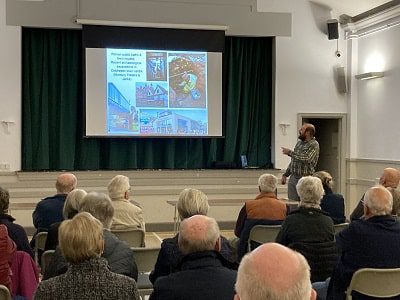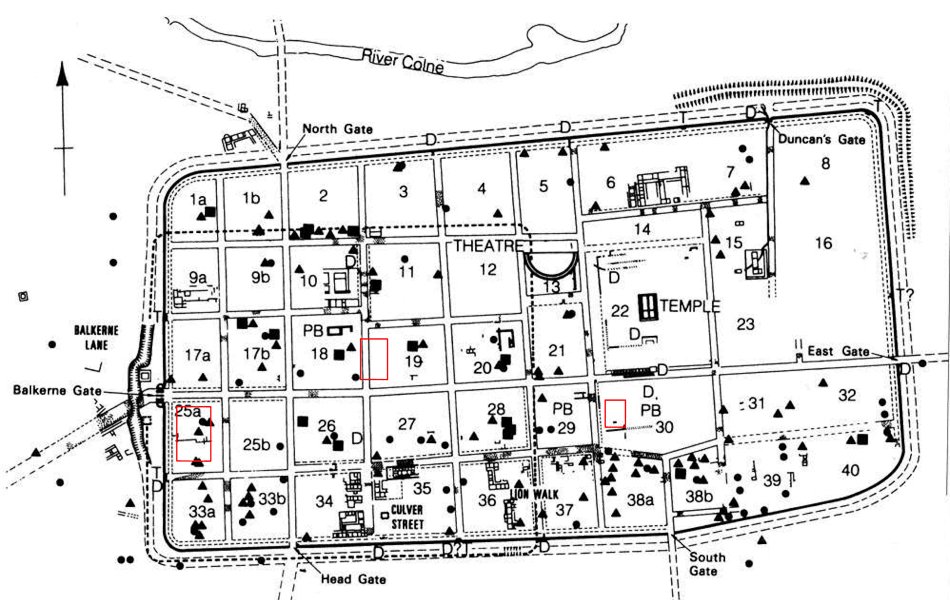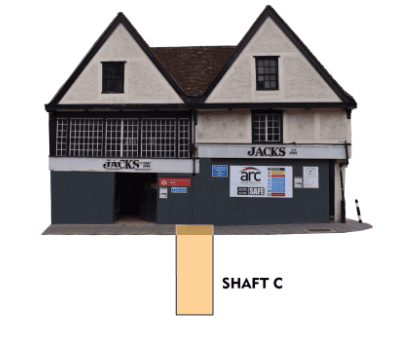The past & future of the Jumbo

The next Local History Group meeting focuses on Colchester’s Victorian water tower, Jumbo. Andrew Crayston, a Trustee of the Colchester & North East Essex Building Preservation Trust, will lead the talk. You will hear about the past & future of the Balkerne water tower, affectionately referred to as Jumbo. There are some useful links below to find out more about Jumbo.
UPDATE: read the meeting report here.
Where & When
The meeting will take place on November 10th in Orpen Hall starting at 7:30 pm. Members & non-members are welcome for £2 and £5 respectively (membership £10 per year). Please email the group at [email protected] if you want to attend; the group will then be able to keep you informed if there are any last minute changes to the meeting.
Roman discoveries at 2 recent digs

Following Charlie Haylock’s talk on the recently released film “The Dig” which tells the story of the discovery of the Anglo Saxon ship burial at Sutton Hoo, the group continued the theme of archaeological “digs” with The Colchester Archaeological Trust‘s Adam Wightman. He informed 30 members and visitors about the Roman remains found in Colchester during two digs by the Trust. The first was unscheduled during the renovation at Jacks, the second planned during the Mercury Theatre redevelopment.
To set the scene for his talk Adam first displayed a map of the Trust’s perception of Roman Colchester; this showed how Colchester developed from its earlier role as a Roman Garrison Fort following the Roman occupation in AD43.

The left-hand red box marks the Mercury Theatre and Jacks by the one on the right. Archaeologists found treasure at the middle red box which shows the location of original Williams & Griffin (now Fenwicks). The dotted box occupying the bottom left corner of the map denote the limits of the Roman Garrison buildings. Based on typical Roman Garrison layouts, Philip Crummy (director and principal archaeologist of the Colchester Archaeological Trust), proposed that the soldiers dormitories would be horizontal buildings where the Mercury extensions were being constructed. The excavations proved this was correct
Jacks & Roman Baths

The Jacks dig was initiated when it became clear that the wooden structure of the building was unstable. To ensure its future, this meant it would would need stabilising with a steel frame. To fix this frame securely to stable foundations under the building it was necessary to dig through layers of archaeology. Digging through the layers archaeologists exposed the foundations of a large Roman building. Together with remains found, this suggested that this was the site of the Roman Baths in Colchester.
Mercury Theatre & Roman Barracks
Unlike the Jacks dig, as layers of soil were removed at the Mercury Theatre dig, more foundations were exposed together with many Roman coins and other objects; interestingly also a single Anglo Saxon 8th century coin, probably the first in Colchester.
Adam told the group that, by applying a mathematical approach (based upon the well recorded plans for the layout of Roman Barracks), it was possible to predict where other substantial foundations might be found. Because of this, as the new buildings were being constructed using piles to support floors, it was possible to fully excavate the archaeology where the piles were to be inserted. This helped to validate the design of the Roman Barracks that had been where the Mercury Theatre is today.
Adam’s talk was clear and well received by the audience and stimulated several interesting questions.
Useful Links to Find out about Jumbo
- http://colchesterbpt.co.uk/jumbo/ – this page talks about the history of the Balkerne Water Tower and the options considered for its future.
- http://www.savejumbo.org.uk – the trust championing the tower and fundraising efforts for its preservation for future generations. A landmark step in progress of this project occurred in December 2021 when the landowner granted the campaign group a 150-year lease.

